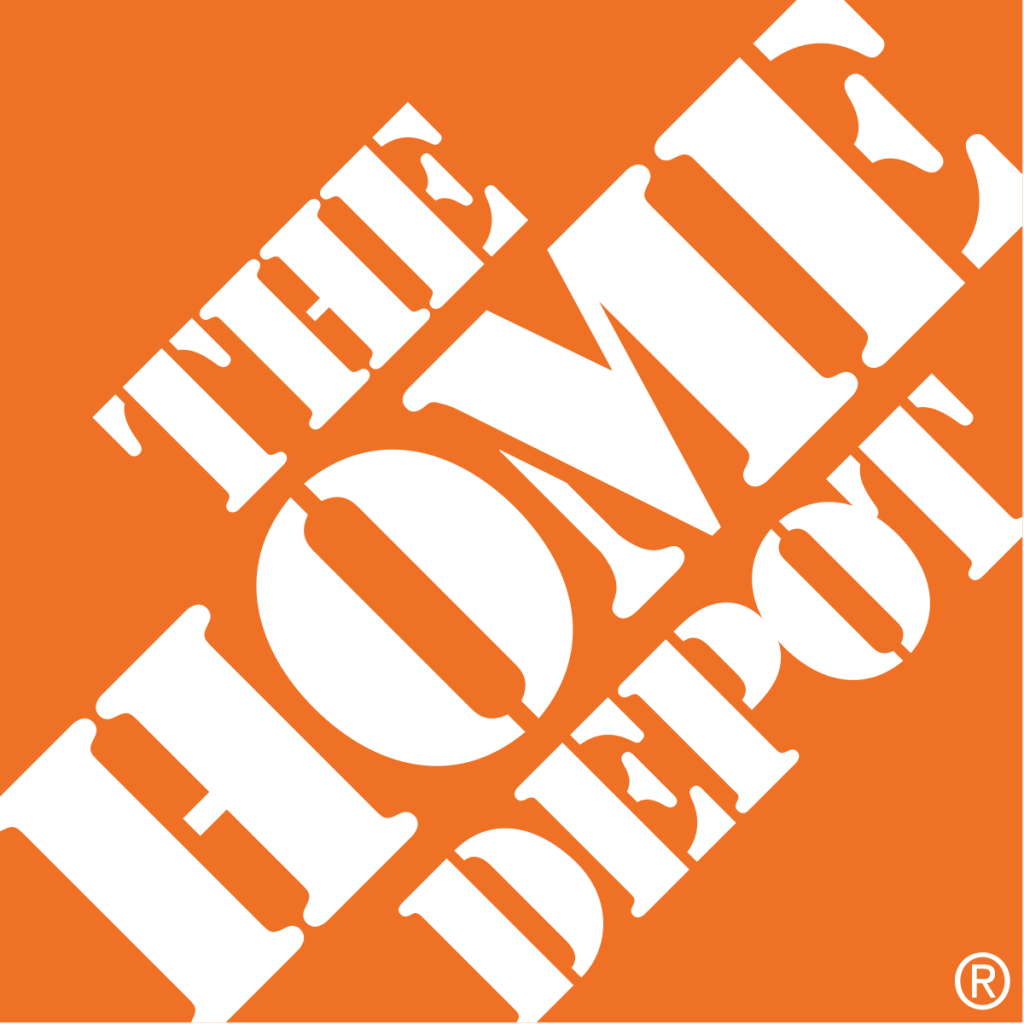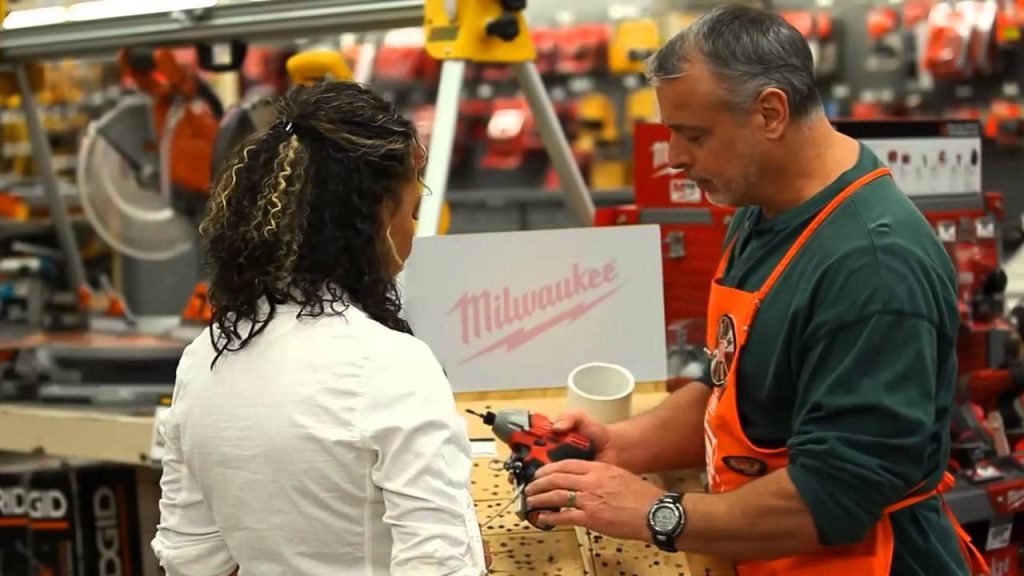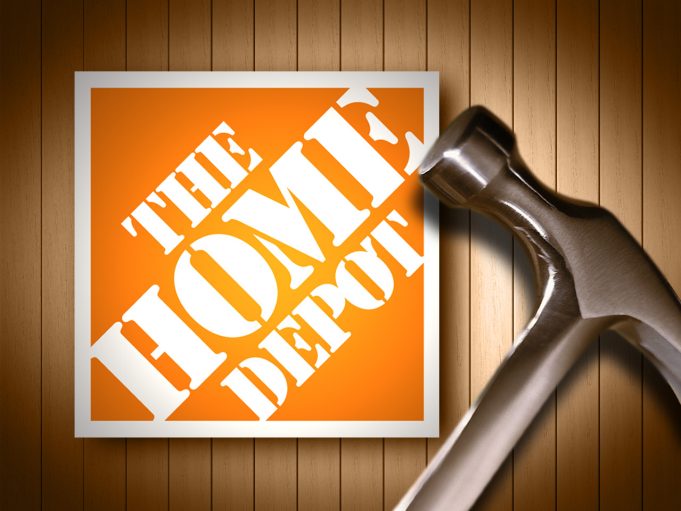This article is about how Home Depot (“HD”) makes money. Firstly, we explain the current business performance of Home Depot. Then, we explain the business model and business strategies of Home Depot. Then, we share the key business segments of Home Depot and how the company generates revenue from each of those segments. Finally, we share the revenues, the profits, and the profit margins of Home Depot for 2014.
The Home Depot (“HD”) is the world’s largest home improvement retailer based on Net Sales for the fiscal year ended February 1, 2015. The Home Depot stores sell a wide assortment of building materials, home improvement products, and lawn & garden products and provide a number of associated customer services.

Understanding Home Improvement Market
U.S. Home Improvement market estimated to be $550 billion in FY 2014 consists of Retail Products, Services and MRO (Maintenance, repair, and operations). Retail Products constitute 65.5% of the total market followed by services 25.5% and MRO 9%. Home Depot with $83 billion sales in FY2014 holds 15% market share in Home Improvement Market.
Key Elements Of Home Depot Business Strategy
Home Depot is focusing on four key business initiatives to retain market leadership: (1) Build And Acquire Market Leading Presence In All Home Improvement Business Segments (2) Offer End to End Home Improvement Product And Services (3) Grow Individual & Professional Customer Segments (4) Grow Direct And Pull Through Product Revenues

1. Build And Acquire Market Leading Presence In All Home Improvement Business Segments
Home Depot segment strategy is two-fold: (a) Organic Growth in Retail Products and Services Business Segment (b) Inorganic Growth By Acquiring Business in MRO Segment.
- Organic Growth in Retail Products and Services Business Segment: Home Depot has built market leadership in retail product segment by offering 40,000 different kinds of products to match local needs through more than 2,200 conveniently located stores across United States, Canada, China, and Mexico. It offers a low price guarantee to beat competition across product segments. For customers requiring qualified professionals for home renovation projects, Home Depot offers installation services through pre-screened independent contractors. Free How-To Clinics and Kids Workshops are other service differentiators that have enabled Home Depot to become successful in Retail product and service business segments.
- Inorganic Growth By Acquiring Business in MRO Segment: To build a market leading position in maintenance, repair, and operations segment, Home Depot recently acquired Interline. This acquisition has helped Home Depot capture 5% of the $50 billion market in maintenance, repair and operations solutions. With this acquisition, Home Depot now has 1,500 plus additional associates and supplementary capabilities of 93 distribution points for the same day, next day delivery.

2. Offer End To End Home Improvement Product and Services
Home Depot stores (averaging 105,000 square feet with approximately 23,000 additional square feet of outside garden area) offer products in 15 categories for both Individuals and Professionals. The company also strategically offers home improvement services for individuals and product pull through services for professionals. Following diagram visually depicts company’s end to end Home Improvement offerings across Products & Services including MRO segment.
3. Grow Individual & Professional Customer Segments
Home Depot serves two primary customer groups- Individuals and Professional Customers. It further categorizes its individual customers as Do-It-Yourself (“DIY”) Customers and Do-It-For-Me (“DIFM”) Customers.
- Grow Individual Customer Segment: In-line with the changing customer needs, Home Depot is working on providing interconnected shopping experience. The company generated 4.5% of its net sales in FY 2014 from online channels. Home Depot is utilizing in-store mobile technology to enable its associates to help customers with their home improvement projects. It offers a variety of clinics and workshops to impart knowledge and to build an emotional connection with DIY individual customer segment. The company offers a variety of installation services targeted at DIFM customers.
- Grow Professional Customers Segment: These customers are primarily professional remodelers, general contractors, repairmen, small business owners, and tradesmen. The company offers a variety of special programs to these customers, including delivery and will-call services, dedicated staff, expanded credit programs, designated parking spaces close to store entrances and bulk pricing programs for both online and in-store purchases. It also offers a loyalty program, Pro Xtra, that provides professional customers with discounts on useful business services, exclusive product offers and a purchase tracking tool.
Home Depot also enables DIY, DIFM and professional customers finance their projects by offering private label credit products through third-party credit providers. All these initiatives are helping Home Depot grow its customer base. In FY 14 Home Depot recorded 1.4 billion transactions, that were up by 3.7% over last year.

4. Grow Direct And Pull Through Product Revenues
Company’s various initiatives like Buy Online, Deliver From Store (BODFS), Buy Online, Pick-up In Store (BOPIS), Buy Online, Ship to Store (BOSS) and Buy Online, Return In Store (BORIS) are helping it directly improve its product revenues. Home Depot’s continued focus on its Professional customer base is further helping it generate pull-through product revenues along with service revenues.
How Home Depot Makes Money?
The Home Depot sells home improvement products and services to do-it-yourself customers, do-it-for-me customers, and professional customers through its stores. The company also offers a significantly broader product assortment through its Home Depot, Home Decorators Collection, and Blinds.com websites. Following diagram shows how the money flows in from the different customer segments and the key cost elements where the money flows out to.
Home Depot FY 2014 Revenues By Business Segments
In FY’14 (fiscal year ended February 1, 2015), Home Depot generated $83.2 billion of total revenues. Of these total revenues, Home Depot generated
- $8.4 billion revenues, 10.1% of the total, from the Kitchen segment.
- $7.6 billion revenues, 9.1% of the total, from the Indoor Garden segment.
- $7.3 billion revenues, 8.8% of the total, from the Paint Segment.
- $6.4 billion revenues, 7.7% of the total, from the Outdoor Garden Segment.
- $6.1 billion revenues, 7.3% of the total, from the Building Materials Segment.
- $6.1 billion revenues, 7.3% of the total, from the Lumber Segment.
- $6.0 billion revenues, 7.2% of the total, from the Flooring segment.
- $5.7 billion revenues, 6.9% of the total, from the Plumbing Segment.
- $5.6 billion revenues, 6.8% of the total, from the Flooring Segment.
- $5.4 billion revenues, 6.5% of the total, from the Tools Segment.
- $5.0 billion revenues, 6.0% of the total, from the Hardware segment.
- $4.7 billion revenues, 5.6% of the total, from the Millwork segment.
- $3.9 billion revenues, 4.7% of the total, from the Bath Segment.
- $2.6 billion revenues, 3.1% of the total, from the Decor Segment.
- $2.5 billion revenues, 3.0% of the total, from the Lighting Segment.

Home Depot FY 2014 Profits And Profit Margins
Of the $83.2 billion of Home Depot total revenues in FY’14, $54.2 billion were the total cost of products sold. This resulted in the gross profits of $28.9 billion and a gross profit margin of 34.8%. Home Depot other operating costs were $18.5 billion. These include Marketing expenses, selling expenses, handling and shipping merchandise, other indirect overhead costs and depreciation & amortization expenses. This resulted in $10.5 billion of operating profit and an operating margin of 12.6%. After interest and other non-operating income and expenses and income taxes, Home Depot had a net profit of $6.3 billion and a net margin of 7.6%.









